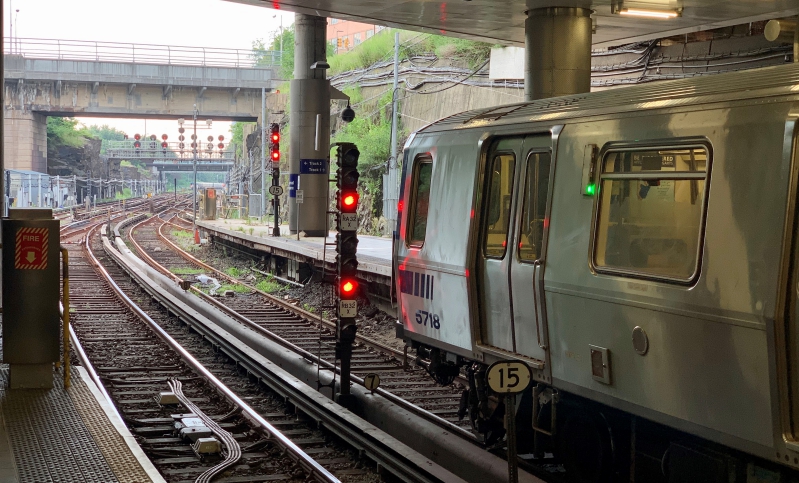
The Government Accountability Office examines recent federal expansion of public transit oversight.
The U.S. public completes nearly 10 billion public transit trips each year. Although transit is overwhelmingly safe, accidents happen. In 2009, an accident on the Washington Metro killed nine victims and injured another 80 passengers. Less than a decade later, another accident on the Washington Metro killed one victim and injured over 80 passengers.
These rail accidents prompted Congress to order the Federal Transit Administration (FTA) to create a national public transportation safety program.
In a recent report, the U.S. Government Accountability Office (GAO) examined the FTA’s progress in implementing Congress’s mandate.
For decades, states were the primary authority over transit safety and ensured that public transit systems met the minimum requirements set forth by the U.S. Department of Transportation. But the National Transportation Safety Board (NTSB), an independent federal agency charged with investigating transportation accidents, has long urged federal authorities to take a more active role in safety, citing inadequate oversight from the relevant state agencies.
The 2015 legislation took up the NTSB’s suggestion and ordered a significant expansion of the FTA’s authority, including the ability to investigate and inspect operations, issue subpoenas, withhold federal funding, and require the correction of safety deficiencies.
Although the FTA has issued safety bulletins and encouraged voluntary adoption of industry-developed safety standards, it has not yet mandated minimum safety standards. The agency has indicated that it intends to begin rulemaking processes for certain safety risk areas, but it has yet to identify which it will pursue.
GAO auditors surveyed officials at several state and local transit agencies to gauge their attitudes about new regulatory initiatives. Most agency officials indicated at least some openness to mandatory federal standards, noting that uniform requirements could increase public confidence in public transit and could broaden the available labor pool.
Surveyed agency officials also identified several challenges for the FTA to consider. Because public transportation systems operate in diverse environments, local operators are concerned that a prescriptive, one-size-fits-all regulatory approach would ignore the realities of their particular agencies. Others noted that adopting national standards would require reconciling a variety of existing state regulations, which could lead to increased costs and unfunded mandates.
Both transit agencies and the NTSB indicated that mandatory standards would be most useful in regulating so-called “human factors”—in other words, employees. Federal standards regulating medical fitness and hours of service already exist for trucking, airline, and railroad workers, and some states have already imposed similar requirements for public transit workers.
Transit officials were less enthusiastic about potential regulation of transit vehicles and other physical assets. Some officials suggested that standards regulating event data recorders, commonly known as “black boxes,” rail signals and communications, and vehicle crashworthiness could be viable if the FTA took asset age and other localized factors into consideration.
Although the FTA has not yet mandated minimum standards, the agency has followed the lead of other Transportation Department modal administrations and required that transit operators adopt safety management systems—internal frameworks that focus transit officials’ attention on an organization-wide proactive effort to identify and mitigate safety risks.
Past regulatory practice sought to tackle safety using a more specific prescriptive approach. The adoption of safety management systems constitutes a significant change: Transit officials are expected to determine and eliminate safety risks that might exist, a responsibility that requires an organization-wide culture shift that can prove elusive.
GAO found that, even though FTA has provided technical assistance to local transit agencies, adopting safety management systems has been difficult for some transit operators. Agencies reported implementing new training programs, creating employee hotlines, and taking other similar measures to help with implementation.
GAO also noted difficulties in complying with new data reporting requirements for the National Transit Database (NTD), a congressionally mandated data repository maintained by the FTA and used by transit operators to measure their safety performance against their peers. Some operators expressed concern that the FTA’s data reporting requirements were unclear and that the reported data were inaccurate as a result.
These potential inaccuracies might affect the efficacy of safety management systems. Safety management systems are data-driven frameworks, and operators use NTD data to benchmark their performance against the industry. If NTD data are inaccurate, they will make the safety management systems approach less effective.
Individual transit agencies implement safety management systems; to address industry-wide safety risks, the FTA also created a safety risk management procedure to assess safety concerns, develop mitigation plans, and implement and monitor those plans. The FTA undertakes a safety risk assessment for each specific concern and then works with stakeholders to address the concern.
The FTA uses safety reports, directives to transit agencies, voluntary standards, and mandatory standards to implement safety risk management procedures.
For example, the FTA has applied its safety risk management procedure to a longstanding concern identified by the NTSB: the lack of inward- and outward-facing cameras onboard rail transit vehicles. As a result of the safety risk assessment, the FTA did not require installation of onboard cameras. The agency’s mitigation plan, however, led to a safety bulletin encouraging transit operators to consider camera installation. But GAO criticized the FTA’s follow-up, noting that the agency failed to assess the performance of the camera safety pilot and to use the information it gained to improve the safety risk management process overall.
GAO recommended that the agency identify and analyze lessons learned from this undertaking. The Transportation Department agreed with GAO’s recommendations and affirmed its commitment to further improving its safety risk management process. The agency recently kicked off a second round of safety risk management, soliciting input from the public to identify pressing safety concerns.
The federal role in transit safety will continue to expand as the FTA proceeds with implementing Congress’s mandate. The agency has the option to pursue mandatory standards through rulemaking, but it can also choose lighter-touch interventions, such as voluntary standards.
The FTA has begun the process to expand federal oversight of transit; how far the agency chooses to go remains to be seen.



